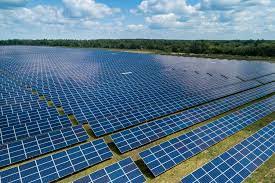Angola’s Ministry of Mineral Resources, Oil and Gas, the Italian Energy Company Eni and Angola’s national oil company, Sonangol, has commissioned the first phase of the Caraculo solar plant in Namibe province, Angola. The 50 MW Caracula solar plant is Angola’s first public-private partnership (PPP) in the field of renewable energy, In this case, is being developed through a partnership between the Italian Energy Company, Eni, and Angola’s national oil company, Sonangol.
Distinguished dignitaries, including Minister of Energy and Water, João Baptista Borges, Minister of Mineral Resources, Oil & Gas, Diamantino Pedro Azevedo, the Governor of Namibe, Archer Mangueira, and officials from Senangol and Eni, attended the unveiling ceremony of the first phase of Caraculo solar plant.
The bigger picture of the Caraculo solar plant in Namibe Province
The Caraculo Solar Plant project is designed in two phases and is expected to produce 50 MW when fully completed. The first phase has a 25 Megawatts output, and the second phase has an identical output capacity. The energy that this power plant generates is expected to significantly impact environmental conservation and energy efficiency. It will effectively address Angola’s electricity deficit and provide a solution to the power shortage. In the long run, the project will also facilitate the expansion of grid electricity access. Particularly in regions of Nimibe and Huíla provinces the residents will benefit from the project.
Also Read: 50 MW Caraculo solar power plant project update
Furthermore, the Caraculo solar plant will be a source of clean energy for the two provinces for 25 years. This will offer great relief from overreliance on diesel for electricity production. Thus, the Caraculo solar plant project actively contributes to Angola’s Climate Action Initiative. The aim is to achieve an annual reduction of approximately 50,000 tons of carbon dioxide emissions.
In addition, the renewable energy project is well aligned with Angola’s target of installing 800 MW of renewable power by 2025.

